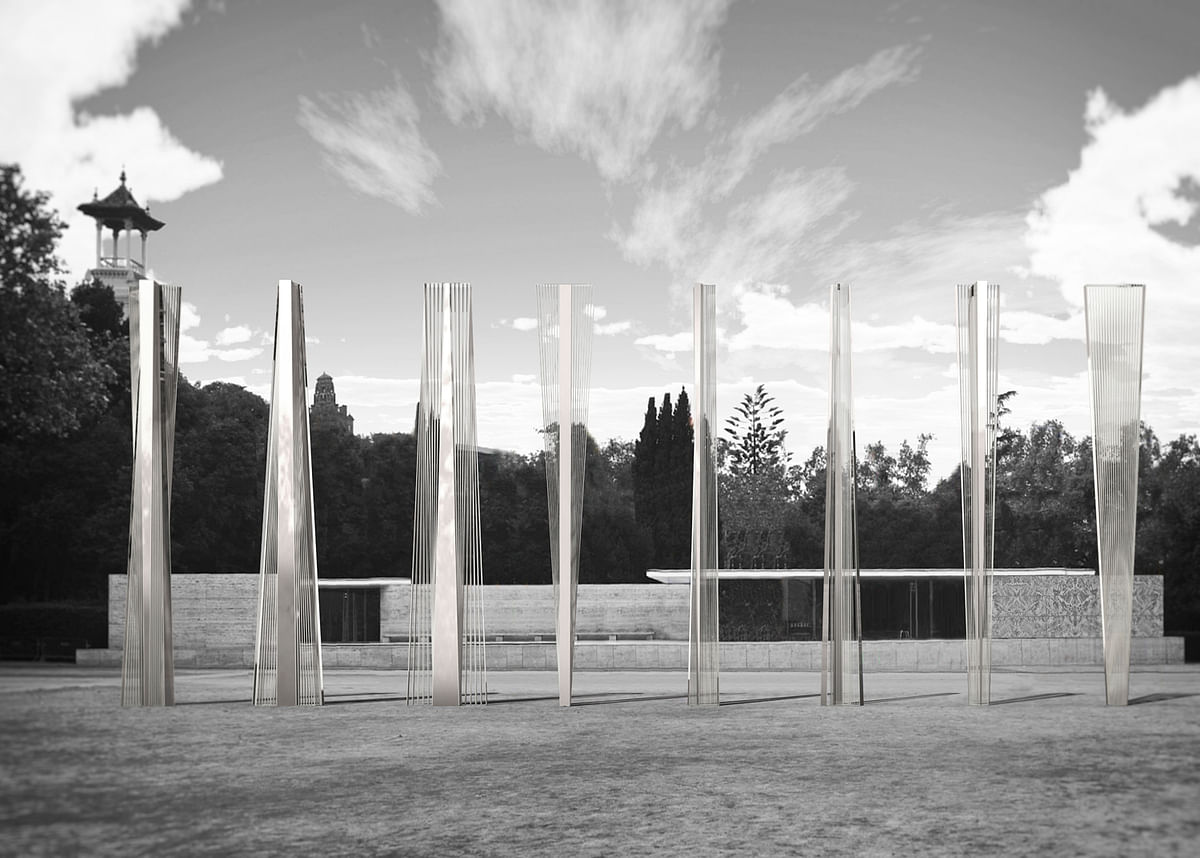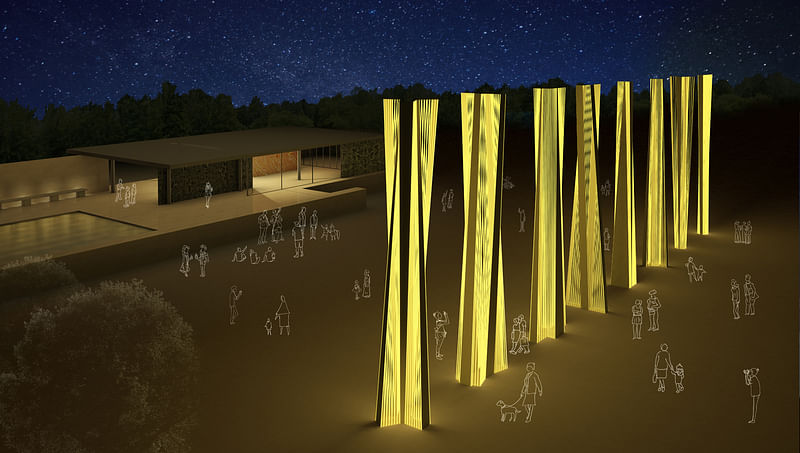Closer look: “Shades of Grey”, the 2nd-prize winner of “Fear of Columns”
By Justine Testado|
Wednesday, Apr 6, 2016

Related
New York-based architects Amir Shouri and Fereshteh Tabe won second place with their proposal “Shades of Grey” in the recently concluded Fear of Columns competition, which the Mies van der Rohe Foundation launched as part of the 30th anniversary of the reconstruction of Mies van der Rohe's Barcelona Pavilion in Spain. The global contest sought the most fitting design for a temporary installation that specifically recreates the pavilion's eight columns and two side pedestals — all within a budget set at €15,000. The first-prize winning proposal will be realized in time for the anniversary celebration in June.
Shouri and Tabe shared more details of their approach. Scroll down to have a look.
RELATED COMPETITION FEAR OF COLUMNS competition

In their project statement, Shouri and Tabe write: “The ‘Berliner Bild Bericht – Fundació Mies van der Rohe’ photo is the start point of this project, paying attention to where and when the photographer stood and took the photo. The important factor besides Mies’s Master Piece is the presence of shadows of the Ionic columns in the frame. The picture shows that Ionic columns exist but they are represented indirectly by their shadows. The picture points the importance of transition from classic architecture to modernism, where the shadows of Ionic columns were used to create a humble background on asphalt ground for presence of Barcelona pavilion.”

“To particular shadow patterns of thin poles out of frame repeats on black and white shadows of stairs from sidewalk to the pavilion platform. Somehow the pattern of shadows is used to show the juxtaposition between old and new, classic and modern, tradition and contemporary in an architectural language.
The other important factor in this photo is the use of material. Stone has been used as a pressure holding material in columns in classic architecture, which is shown on the Ionic columns and two pedestals as a symbol of structural load bearing material. However, stone is used in the Barcelona pavilion as the major material not only for load bearing purposes, but stone is also used in its natural pattern with large slab sizes to elevate the design for both interior and exterior spaces.”

“Indeed, glass and steel are used as space ingredients to define space in a way that transparency of glass and reflectivity of steel complete the venue by helping to see the depth in space cladded by natural stone panels. The shadows of new columns’ design will attempt to be less obstructive and be more compelling for design of Barcelona pavilion while being dynamically transformative to show transition from classic to modernity.”
Read the full submission here.
All images courtesy of Amir Shouri and Fereshteh Tabe.


Share
0 Comments
Comment as :